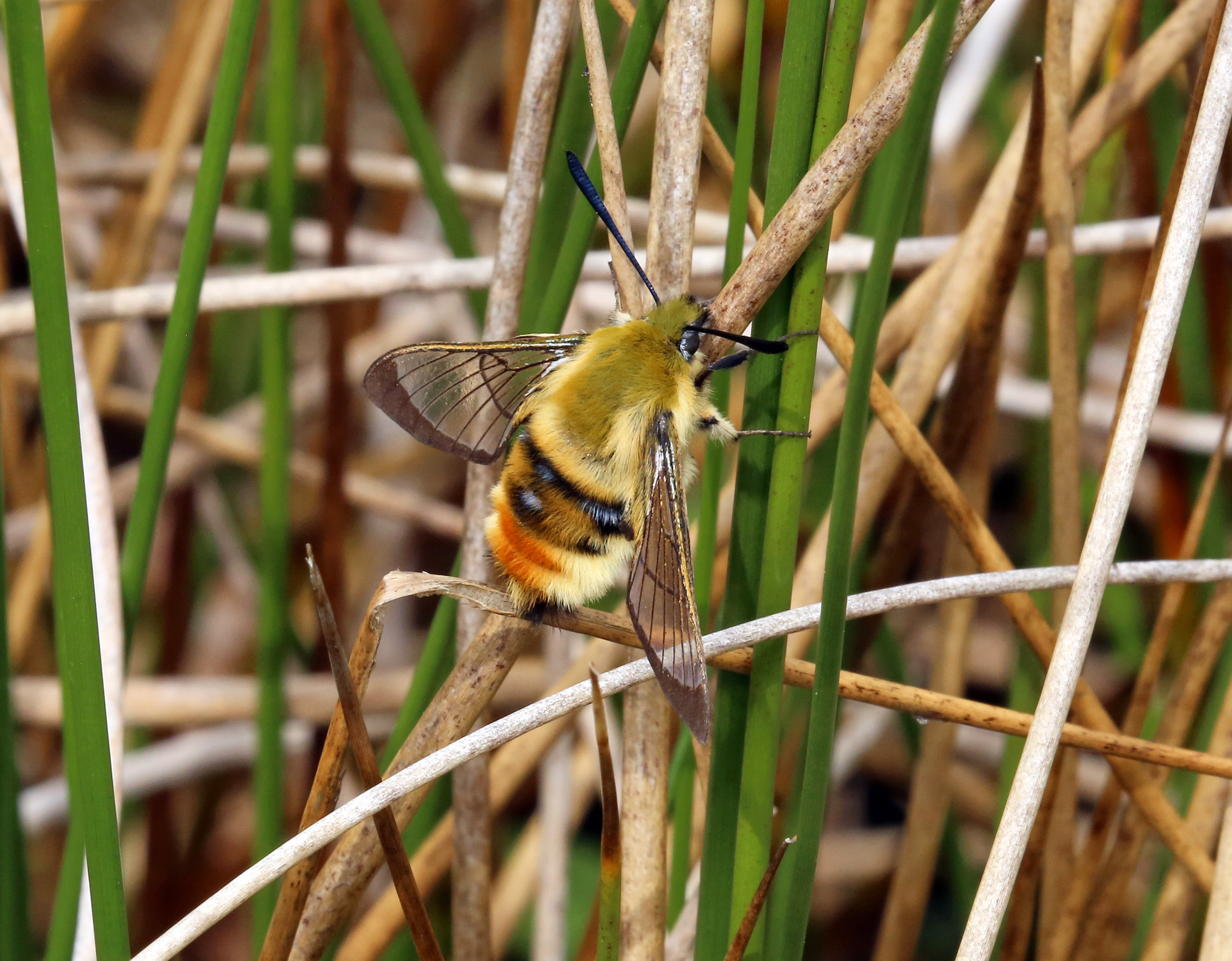One of Wales’ rarest moths has been seen in the Brecon Beacons National Park for the first time in 100 years, wildlife charity Butterfly Conservation can reveal.
The Narrow-bordered Bee Hawk-moth was previously found on 12 sites across Wales, but four new sites have been discovered this year, including Cwm Cadlan National Nature Reserve in the Brecon Beacons.
This day-flying moth is a distinctive bumblebee-mimic, with a yellow and black abdomen and transparent wings, which have well-defined black-coloured veins running through them.
The Narrow-bordered Bee Hawk-moth has also been seen at two new locations in Carmarthenshire, including Pembrey Forest and close to the town of Pontyberem.
Another confirmed sighting at Lavernock Point in Glamorgan this summer was the first record of the species in the Vale of Glamorgan since 1935.
George Tordoff, Senior Conservation Officer for Butterfly Conservation Wales, said: “We think this resurgence is down to a combination of the warm summer in 2018 resulting in a good breeding season, followed by a good spring this year, which has created favourable conditions for the Narrow-bordered Bee Hawk-moth.
“This moth was once widely recorded in the UK, but has undergone a substantial decline over recent decades, so it’s heartening to see it having such a good year in Wales.”
The Narrow-bordered Bee Hawk-moth has also been discovered this year at several new locations in the south west of England and in Scotland.
George added: “The moth shares the same habitat as the Marsh Fritillary butterfly and Butterfly Conservation has been doing lots of work to restore marshy grasslands for this species in Wales and other parts of the UK, so hopefully this will help the Narrow-bordered Bee Hawk-moth turn the corner and start to spread again.”
The Narrow-bordered Bee Hawk-moth can be seen visiting various flowers throughout May and June. The moth’s caterpillar feeds on Devil’s-bit Scabious.



